Easy Juice Recipes for Beginners in 2025

Have you ever wanted to enjoy more fruits and veggies without spending hours in the kitchen? Juicing makes it easy! With just a few ingredients and a juicer, you can whip up something fresh and packed with nutrients right at home. It’s no surprise that the global love for juicing is growing. In fact:
-
The fruit and vegetable juice market is expected to hit $145.85 billion by 2030.
-
Revenue from juices made at home worldwide is projected to reach $86.61 billion in 2025.
Juicing isn’t just trendy—it’s a delicious way to boost your health. Whether you’re craving a zesty juice recipe or a quick energy fix, it’s all about experimenting with flavors and finding what works for you.
Key Takeaways
-
Juicing is an easy way to eat more fruits and veggies.
-
Pick the right juicer for you: fast ones are cheaper, but slow ones keep more nutrients.
-
If you don’t want a juicer, use a blender. Blend and strain to make juice-like drinks.
-
Wash your produce, peel if needed, cut small, and remove seeds for better juice.
-
Make tasty juice by starting mild, adding sweet fruits, and using lemon or lime for zest.
-
Get more juice by layering ingredients, using fresh produce, and squeezing pulp again.
-
Try simple recipes like green juice, tropical juice, or cucumber mint juice to begin.
-
Fresh juice helps digestion, boosts energy, and strengthens your immune system.
Picking the Right Juicer for Beginners
When I began juicing, I didn’t know which juicer to choose. There are so many types, and it can be confusing. Don’t worry—I’ll help you figure it out! Here are three beginner-friendly options to consider for your kitchen.
Centrifugal Juicers
Centrifugal juicers work fast, spinning quickly to make juice. They’re great if you want results without much prep time.
Why centrifugal juicers are awesome:
-
They’re cheap and easy to find.
-
They juice hard foods like carrots and apples well.
-
Cleaning them is usually simple.
But they’re not perfect. They can be loud and don’t always get all the juice out. Still, they’re a good choice for beginners who want something affordable.
Masticating Juicers
Masticating juicers, or slow juicers, work gently to squeeze juice. This slower method keeps more nutrients, which is great for health-focused juicing.
Check out this table to see why masticating juicers shine:
|
Juicer Brand |
Features |
Benefits |
|---|---|---|
|
Hurom |
Slow squeeze technology |
Keeps vitamins |
|
Omega |
Dual-stage extraction |
Makes more juice |
|
Breville |
Overload protection |
Easy to use |
|
Ninja |
NeverClog system |
Handles high-fiber foods well |
|
Omega Vertical Square |
Simple interface |
Dry pulp for better extraction |
I like masticating juicers for leafy greens and soft fruits. They’re quieter and make smoother juice with less foam. If you’re serious about juicing, these are worth the investment.
Blender as Another Option
Not ready to buy a juicer? A blender can work too! I’ve made juice-like drinks with my blender, and it’s surprisingly effective.
Why blending might be for you:
-
You keep the pulp, which adds fiber and nutrients.
-
If you already own a blender, you don’t need new gear.
-
Blending is easy and great for beginners.
To make juice with a blender, blend your ingredients and strain them using a sieve or cheesecloth. It takes a little extra effort but is perfect for trying juicing without buying a juicer.
Whatever you pick, start experimenting to see what you like best. Whether it’s a centrifugal juicer, masticating juicer, or blender, you’ll soon enjoy fresh, homemade juice!
Juicing Basics for Beginners
Starting your juicing journey can feel overwhelming, but trust me, it’s easier than it seems. Once you get the hang of a few basics, you’ll be whipping up delicious juices in no time. Let me walk you through some essential tips to make your juicing experience smooth and enjoyable.
Preparing Produce for Juicing
Before you start juicing, it’s important to prep your fruits and veggies the right way. Proper preparation not only ensures better-tasting juice but also helps you get the most nutrients out of your ingredients. Here’s how I do it:
-
Wash everything thoroughly: Even if the produce looks clean, I always rinse it under running water to remove dirt, pesticides, or bacteria. For tougher skins, like apples or cucumbers, I use a vegetable brush.
-
Peel when necessary: While many fruits and veggies can be juiced with their skins on, I peel citrus fruits like oranges and lemons to avoid bitterness. However, I leave the skin on apples and cucumbers for extra fiber and nutrients.
-
Cut into smaller pieces: Most juicers work better when the produce is cut into chunks. This also prevents clogging and makes the process faster.
-
Remove seeds and pits: Hard pits from fruits like peaches or cherries can damage your juicer. I always take a moment to remove them before juicing.
Here’s a quick tip I learned: Don’t peel vegetables unless absolutely necessary. Skins often contain valuable nutrients and fiber. For example, carrots and cucumbers can go straight into the juicer after a good scrub.
If you’re wondering how to retain maximum nutrition, check out these expert tips:
|
Tip |
Description |
|---|---|
|
1 |
Don’t peel vegetables until after cooking them—or better yet, don’t peel at all. |
|
2 |
Cut food after cooking to expose less surface area to heat and water. |
|
3 |
Cook vegetables for only a few minutes to preserve vitamins. |
By following these steps, you’ll ensure your juice is as fresh and nutrient-packed as possible.
Balancing Flavors in Your Juice Recipe
Creating a juice that tastes amazing is all about balance. When I first started juicing, I made the mistake of using too much fruit, which made my juices overly sweet. Over time, I’ve learned how to combine flavors for a perfect blend. Here’s what works for me:
-
Start with a base: I usually pick a mild vegetable like cucumber or celery as my base. These add volume without overpowering the flavor.
-
Add sweetness: Fruits like apples, pineapples, or oranges are great for adding natural sweetness. I stick to one or two fruits per juice to keep the sugar content in check.
-
Include something zesty: A splash of lemon or lime juice brightens up the flavor and balances the sweetness.
-
Experiment with herbs and spices: Fresh mint, ginger, or turmeric can take your juice to the next level. They add depth and even offer health benefits like reducing inflammation.
Here’s a handy table to help you pair flavors:
|
Flavor Group |
Characteristics |
|---|---|
|
Fruity and sour |
Combines sweet and tart flavors |
|
Citrusy |
Bright, zesty flavors |
|
Woody and bitter |
Earthy, deep flavors |
|
Spicy, cinnamon taste |
Warm, aromatic flavors |
For a beginner juice recipe, try combining cucumber, apple, and a touch of ginger. It’s refreshing, easy to make, and perfectly balanced.
Maximizing Juice Yield with Your Juicer
Getting the most juice out of your produce is key to making the most of your ingredients. I’ve learned a few tricks to maximize juice yield, no matter which type of juicer you’re using:
-
Layer your ingredients: When juicing leafy greens like spinach or kale, I sandwich them between harder produce like apples or carrots. This helps push the greens through the juicer more effectively.
-
Use fresh produce: Fresher fruits and veggies tend to have higher water content, which means more juice. I always try to juice produce within a day or two of buying it.
-
Go slow with masticating juicers: If you’re using a slow juicer, take your time. Feeding the produce slowly allows the juicer to extract every last drop.
-
Rejuice the pulp: After juicing, I often run the pulp through the juicer one more time. You’d be surprised how much extra juice you can get!
If you’re using a blender instead of a juicer, strain the blended mixture through a cheesecloth or fine mesh sieve. It takes a little extra effort, but it’s worth it for smooth, pulp-free juice.
By following these tips, you’ll be getting the most juice out of your produce and reducing waste. Plus, you’ll save money by making your ingredients go further.
Easy Juicing Recipes to Try

Want to try some simple juicing recipes? These are perfect for beginners! They’re tasty, healthy, and easy to make. Whether you like green, fruity, or refreshing flavors, there’s a recipe here for you.
Classic Green Juice Recipe
A green juice is a great choice for beginners. It mixes leafy greens with citrus for a healthy and flavorful drink. Here’s how to make it:
Ingredients:
-
2 cups kale leaves (no stems)
-
2 celery stalks
-
1 green apple (no core)
-
1/2 lemon (peeled)
-
1-inch piece of fresh ginger
Instructions:
-
Wash all the ingredients well.
-
Cut the apple, celery, and ginger into small pieces.
-
Add kale, celery, apple, lemon, and ginger to your juicer.
-
Stir the juice and drink it fresh.
Pro Tip: Use a slow juicer for more juice. If using a blender, add water and strain the mix.
Why It’s Great:
This juice is full of vitamins and minerals. Kale and celery give antioxidants, while ginger helps digestion. Lemon and apple make it taste fresh and bright.
Here’s why green juice is so powerful:
|
Nutritional Component |
Benefits |
|---|---|
|
Leafy Greens |
Packed with nutrients like kale and celery. |
|
Digestive Boost |
Ginger helps your body absorb nutrients. |
|
Antioxidants |
Protects your cells from damage. |
|
Immune Support |
Lemon adds vitamin C for health. |
Start your day with this juice or enjoy it later for energy. It’s a simple recipe that’s both healthy and delicious.
Tropical Sunrise Juice Recipe
This juice feels like a tropical vacation! It’s sweet, tangy, and full of fruity flavors. I love making it when I need a quick energy boost.
Ingredients:
-
1 cup pineapple chunks
-
1 orange (peeled)
-
1 carrot (peeled)
-
1/2-inch piece of turmeric root (optional)
Instructions:
-
Peel the orange and carrot.
-
Cut the pineapple and carrot into small pieces.
-
Add pineapple, orange, carrot, and turmeric to your juicer.
-
Chill the juice and enjoy!
Note: Turmeric adds health benefits but can be skipped for a sweeter taste.
Why It’s Great:
This juice is rich in vitamin C from pineapple and orange. Carrots add sweetness and beta-carotene, which is good for your skin and eyes. Turmeric, if used, helps fight inflammation.
Here’s a look at the ingredients and their benefits:
|
Recipe |
Ingredients |
|---|---|
|
Green Juice |
Kale, Celery, Apple, Lemon, Ginger |
|
Beet Juice |
Beet, Carrots, Celery, Apple, Ginger |
|
Carrot Juice |
Carrots, Orange, Frozen pineapple, Ginger, Fresh turmeric root |
This tropical juice is perfect for beginners who want fruity flavors and healthy benefits.
Refreshing Cucumber Mint Juice Recipe
On hot days, cucumber mint juice is the best! It’s light, hydrating, and super refreshing. Plus, it’s one of the easiest juices to make.
Ingredients:
-
1 large cucumber
-
1/2 lime (peeled)
-
A handful of mint leaves
-
1 teaspoon honey (optional)
Instructions:
-
Wash the cucumber and mint leaves.
-
Cut the cucumber and lime into small pieces.
-
Add cucumber, lime, and mint to your juicer.
-
Stir in honey for sweetness, if you want.
-
Serve over ice for extra coolness.
Callout: Simple recipes like this one show that less can be more.
Why It’s Great:
Cucumbers are mostly water, so this juice hydrates well. Mint makes it refreshing, and lime adds a tangy flavor. It’s low in calories and great for staying cool.
Here’s why this juice is special:
-
Cucumbers help control blood pressure with potassium.
-
Mint fights germs and adds flavor.
Quote: “This juice is light and refreshing. It’s perfect for summer days.”
If you’re new to juicing, this cucumber mint juice is a must-try. It’s quick, easy, and super refreshing.
Immune-Boosting Citrus Juice Recipe
When I feel my body needs help fighting germs, I make citrus juice. It’s full of vitamin C and antioxidants that keep me healthy. This recipe is easy, tasty, and great for beginners.
Ingredients:
-
2 oranges (peeled)
-
1/2 grapefruit (peeled)
-
1 lemon (juiced)
-
1 lime (juiced)
Instructions:
-
Remove the peels from oranges and grapefruit.
-
Juice the oranges, grapefruit, lemon, and lime.
-
Mix the juice and drink it fresh.
Tip: Chill the fruits first for a cooler juice.
Why It’s Great:
Citrus fruits are packed with nutrients. They have vitamin C, folate, and polyphenols, which help your immune system and lower inflammation. Drinking them often can even reduce the risk of long-term illnesses.
Here’s how much vitamin C is in this recipe:
-
1/2 grapefruit: 39.3 mg
-
1 lemon: 18.6 mg
-
1 lime: 19.5 mg
This juice is tangy, healthy, and perfect for boosting your immune system quickly.
Sweet Berry Blast Juice Recipe
If you love berries, this juice will be your favorite. It’s sweet, colorful, and full of antioxidants that help your brain and memory. Plus, it’s super simple to make.
Ingredients:
-
1 cup blueberries
-
1 cup strawberries (hulled)
-
1/2 cup raspberries
-
1/2 cup blackberries
Instructions:
-
Wash all the berries well.
-
Put the berries in your juicer or blender.
-
If using a blender, strain the juice for smoothness.
-
Drink fresh and enjoy!
Callout: This juice is great for breakfast or a snack.
Why It’s Great:
Berries are super healthy. Research shows blueberries improve memory, lower blood pressure, and help your heart. They’re rich in flavonoids, which are strong antioxidants.
Here’s what studies say about berries:
|
Study |
Findings |
|---|---|
|
Basu et al. |
Blueberries lower blood pressure with potassium and magnesium. |
|
Rodriguez-Mateos et al. |
Flavonoids improve heart health and reduce artery stiffness. |
|
Krikorian et al. |
Blueberries boost memory in older adults. |
|
Shukitt-Hale et al. |
Blueberries help brain health and reduce inflammation. |
|
Devore et al. |
Eating blueberries lowers the risk of dementia. |
This juice is tasty and helps your brain stay sharp and healthy.
Energizing Carrot Ginger Juice Recipe
When I need more energy, I make carrot ginger juice. It’s bright, spicy, and full of nutrients to keep me active. It’s also a great recipe for beginners.
Ingredients:
-
4 carrots (peeled)
-
1-inch piece of fresh ginger
-
1/2-inch piece of turmeric root (optional)
Instructions:
-
Peel the carrots and ginger.
-
Cut the carrots into smaller pieces.
-
Juice the carrots, ginger, and turmeric (if using).
-
Stir and drink fresh.
Note: Skip turmeric for a milder taste.
Why It’s Great:
Carrots have beta carotene, which boosts energy and immunity. Ginger helps digestion and speeds up metabolism. Turmeric fights inflammation and supports your liver.
Here’s a quick look at the benefits:
|
Ingredient |
Benefits |
|---|---|
|
Carrots |
Energy and immune support |
|
Ginger |
Helps digestion and reduces inflammation |
|
Turmeric |
Protects the liver and fights inflammation |
Juicing makes healthy drinks that fill you up and fight inflammation. This recipe is perfect for staying energized and healthy.
Hydrating Watermelon Lime Juice Recipe
When I need a refreshing drink that hydrates and energizes, I turn to watermelon lime juice. It’s light, fruity, and perfect for hot days. Plus, it’s one of the easiest juicing recipes to make. Let me show you how to whip up this thirst-quenching drink.
Ingredients:
-
2 cups watermelon chunks (seedless)
-
1/2 lime (peeled)
-
1 teaspoon honey (optional)
-
A pinch of sea salt
Instructions:
-
Wash the lime and cut it into smaller pieces.
-
Chop the watermelon into chunks.
-
Add the watermelon and lime to your juicer.
-
Stir in honey and sea salt for extra flavor.
-
Serve chilled or over ice for a refreshing treat.
Tip: If you don’t have a juicer, use a blender. Blend the ingredients and strain the mixture through a fine mesh sieve for smooth juice.
Why It’s Great:
Watermelon lime juice isn’t just delicious—it’s packed with hydration benefits. Watermelon is 92% water, making it ideal for replenishing fluids. Lime adds a tangy twist and boosts the drink with vitamin C. Together, they create a perfect balance of flavor and health.
Hydration and Electrolyte Benefits:
This juice does more than quench your thirst. It helps maintain fluid levels and supports muscle function. Here’s a breakdown of the electrolytes in this recipe:
|
Electrolyte |
Amount per Serving |
|---|---|
|
Sodium |
|
|
Potassium |
200 mg |
|
Magnesium |
60 mg |
|
Watermelon Juice |
269 mg of Potassium |
|
|
7% of Daily Magnesium Requirement |
These electrolytes balance fluids in and around cells, support healthy blood pressure, and keep muscles working smoothly. That’s why I love sipping this juice after a workout or on a hot summer day.

Flavor Pairing Ideas:
Want to mix things up? Try adding fresh mint leaves or a splash of coconut water to this recipe. Mint makes the juice even more refreshing, while coconut water boosts the electrolyte content. You can also experiment with a pinch of cayenne pepper for a spicy kick.
Callout: This juice is perfect for staying hydrated during outdoor activities or after exercise. It’s light, flavorful, and packed with nutrients.
Watermelon lime juice is one of my favorite easy juicing recipes. It’s simple to make, tastes amazing, and keeps me hydrated all day long. Give it a try—you’ll love it!
Health Benefits of Juicing

Juicing has changed how I think about staying healthy. It’s not just tasty—it’s a way to give your body the nutrients it needs. Let me share some benefits I’ve noticed.
Nutritional Benefits of Fresh Juice
Fresh juice is packed with vitamins and minerals. Juicing fruits and veggies makes their nutrients easy to absorb. Drinking juice in the morning gives me quick energy.
You can mix different ingredients to make healthy juices you’ll enjoy. Adding spinach or kale to fruit juice gives iron and vitamin K without changing the taste too much.
Here’s a tip: drink your juice right after making it. Fresh juice loses nutrients over time, so enjoy it quickly for the best benefits.
Digestive Benefits of Juicing
Juicing can help if your digestion feels slow. Fresh juice is gentle on your stomach because it doesn’t have fiber like whole fruits and veggies. This makes it easier for your body to absorb nutrients fast.
When I started juicing, my digestion got better right away. Ginger and mint are great for digestion. Ginger calms your stomach, and mint helps with bloating. Adding them to juice improves both flavor and digestion.
Juicing also keeps you hydrated, which is important for digestion. Water-rich foods like cucumber and watermelon make juices that help everything move smoothly.
Energy and Immunity Boost from Juicing
Juicing is perfect when I need energy or want to avoid getting sick. Fresh juice has natural sugars and carbs that give quick energy without a crash.
Juicing also helps your immune system. Ingredients like oranges, carrots, and spinach have vitamins A, C, and E, which boost immunity. Cold-pressed juices keep these nutrients strong, making them even better.
Here’s how juicing helps with energy and immunity:
|
Benefit |
Description |
|---|---|
|
Hydration |
Juices keep you hydrated, which helps you stay energized. |
|
Energy Boost |
Natural sugars and carbs give quick energy without processed snacks. |
|
Immune Support |
Cold-pressed juices are full of vitamins A, C, and E for better immunity. |
When I feel tired, I make juice with oranges, ginger, and lemon. It’s like a healthy drink that wakes me up!
Juicing isn’t just popular—it’s a simple way to give your body what it needs. Whether you want more energy, better digestion, or stronger immunity, juicing can help.
FAQs About Juicing
What Can I Do with Leftover Pulp?
When I first started juicing, I hated throwing away the leftover pulp. It felt like such a waste! Over time, I found creative ways to use it, and now I actually look forward to repurposing it. Here are some ideas you can try:
-
Add it to baked goods: Carrot or apple pulp works great in muffins, pancakes, or even cookies. It adds moisture and a subtle flavor.
-
Make veggie broth: Toss the pulp into a pot with water, herbs, and spices. Simmer it for a while, strain it, and you’ve got a homemade broth.
-
Boost your smoothies: Blend a handful of pulp into your next smoothie for extra fiber and nutrients.
-
Compost it: If you garden, pulp makes excellent compost. It enriches the soil and reduces waste.
-
Create dips or spreads: Mix veggie pulp with cream cheese or hummus for a tasty spread.
Tip: Store pulp in an airtight container in the fridge if you’re not using it right away. It stays fresh for about 2–3 days.
Experiment with these ideas and see what works for you. You’ll be surprised how versatile pulp can be!
How Long Can I Store Fresh Juice?
Fresh juice tastes best when you drink it right away. But let’s be real—sometimes life gets busy. If you need to store it, here’s what I’ve learned:
-
Use an airtight container: Glass jars with lids work best. They keep air out, which slows down oxidation.
-
Fill it to the top: Less air in the container means your juice stays fresher longer.
-
Refrigerate immediately: Fresh juice lasts about 24–48 hours in the fridge. After that, it starts losing nutrients and flavor.
Callout: If you notice a change in color, smell, or taste, it’s time to toss it. Fresh juice should look and smell vibrant.
For longer storage, freezing is an option. Pour the juice into freezer-safe containers, leaving some space for expansion. Thaw it in the fridge when you’re ready to drink. Just remember, freezing can slightly alter the taste and texture.
Can I Juice Without a Juicer?
Absolutely! When I didn’t have a juicer, I used my blender, and it worked surprisingly well. Here’s how you can do it too:
-
Chop your produce: Cut fruits and veggies into small pieces so they blend easily.
-
Add water: Pour in a little water to help the blender process everything smoothly.
-
Blend until smooth: Blend on high until you get a thick, smoothie-like consistency.
-
Strain the mixture: Use a fine mesh sieve, nut milk bag, or cheesecloth to separate the juice from the pulp. Squeeze out as much liquid as you can.
Pro Tip: Save the leftover pulp for recipes like veggie burgers or soups.
While it takes a bit more effort, blending is a great way to try juicing without investing in a juicer. Plus, you get to control the texture and flavor of your juice. Give it a shot—you might love the results!
How Do I Clean My Juicer?
Cleaning a juicer might seem like a hassle, but trust me, it’s easier than you think. When I first started juicing, I dreaded cleaning up. Over time, I figured out a routine that makes the process quick and painless. Let me walk you through it step by step.
Step 1: Disassemble Your Juicer
The first thing I do is take apart the juicer. Most juicers have removable parts like the pulp container, juice spout, and filter basket. Check your juicer’s manual if you’re unsure how to disassemble it.
Tip: Keep track of small parts like rubber seals or screws. Losing them can make reassembly tricky.
Step 2: Rinse Immediately
I always rinse the parts right after juicing. Dried pulp is harder to clean, so rinsing everything under warm water prevents buildup. For stubborn bits, I use a soft brush or sponge.
Callout: Don’t wait too long to clean your juicer. Fresh pulp washes off easily, but dried pulp can take forever to scrub away.
Step 3: Scrub the Filter Basket
The filter basket is usually the trickiest part to clean. It’s where pulp and juice residue tend to stick. I use a toothbrush or a small cleaning brush to scrub the mesh thoroughly.
Here’s a quick tip:
-
Soak the filter basket in warm, soapy water for 10 minutes. This loosens stuck pulp and makes scrubbing easier.
Step 4: Wash with Soap
Once I’ve rinsed everything, I wash the parts with dish soap and warm water. I avoid using harsh chemicals since they can damage the juicer. For plastic parts, I use a gentle sponge to prevent scratches.
Step 5: Dry Completely
After washing, I dry all the parts with a clean towel. Leaving them wet can lead to mold or unpleasant smells. If I’m in a hurry, I let the parts air dry on a dish rack.
Step 6: Clean the Base
The juicer’s base doesn’t usually touch food, but it can get splattered. I wipe it down with a damp cloth and dry it immediately.
Pro Tip: Never submerge the base in water. It contains electrical components that can get damaged.
Step 7: Reassemble and Store
Once everything is clean and dry, I reassemble the juicer and store it in a safe spot. Keeping it ready to use makes juicing more convenient the next time.
Bonus: Weekly Deep Cleaning
Every week, I give my juicer a deep clean. I soak all removable parts in a mixture of water and white vinegar to remove stains and odors. It keeps my juicer looking and smelling fresh.
Cleaning your juicer doesn’t have to be a chore. With these steps, you’ll have it sparkling clean in no time. Give it a try—you’ll feel great knowing your juicer is ready for your next delicious recipe!
Juicing has been a fun and healthy habit for me. It’s a simple way to enjoy fruits and veggies while improving your health. With a juicer and an easy recipe, you can make tasty drinks at home.
Here’s what health experts say about juicing:
-
It might lower the chances of diseases like cancer or heart problems.
-
Fresh juice helps your body absorb vitamins and minerals quickly.
-
Juicing can improve heart health by lowering blood pressure naturally.
If you’re just starting, don’t stress about it. Pick some fruits and veggies you like, follow a recipe, and let the juicer handle the rest. The drinks are delicious and good for you. Try it—you’ll gain so much and lose nothing!
FAQ
What fruits and vegetables are best for beginners?
Choose simple options like apples, carrots, cucumbers, and oranges. They’re cheap, easy to find, and taste good. Add leafy greens like spinach or kale for more nutrients.
Tip: Mix sweet fruits with mild veggies for better flavor.
Can I juice frozen fruits and vegetables?
Yes, you can! Let them thaw first to get more juice. Frozen produce works great in blenders too. It’s perfect for enjoying fruits and veggies out of season.
Note: Frozen produce may give less juice than fresh ones.
How often should I drink juice?
Start with one glass daily. It’s an easy way to add nutrients. Adjust the amount based on your health needs and preferences.
Callout: Don’t replace full meals with juice. Listen to your body.
Is juicing expensive?
It doesn’t have to be! Buy seasonal produce and shop in bulk to save money. Use fruits and veggies before they go bad for juicing.
Pro Tip: Farmers’ markets often sell fresh produce at lower prices.
Can I mix fruits and vegetables in one juice?
Yes, mixing fruits and veggies makes tasty, healthy juices. Avoid starchy veggies like potatoes with fruits, as they can upset digestion.
Example: Try apple, carrot, and ginger for a sweet-spicy mix.
Should I peel fruits and vegetables before juicing?
Sometimes. Peel citrus fruits to avoid bitterness. Keep the skin on apples, cucumbers, and carrots for more nutrients. Always wash produce well to remove dirt and chemicals.
Tip: Organic produce is best if you want to juice with the skin.
What’s the difference between juicing and blending?
Juicing removes pulp, leaving just liquid. Blending keeps fiber, making drinks more filling. Juices digest faster, while smoothies give longer-lasting energy.
Quick Tip: Use a blender for fiber-rich drinks.
Can kids drink fresh juice?
Yes, kids can enjoy fresh juice in small amounts. Use recipes with sweet fruits like apples or berries. Skip strong flavors like ginger or too much citrus.
Reminder: Check with a pediatrician for specific advice.



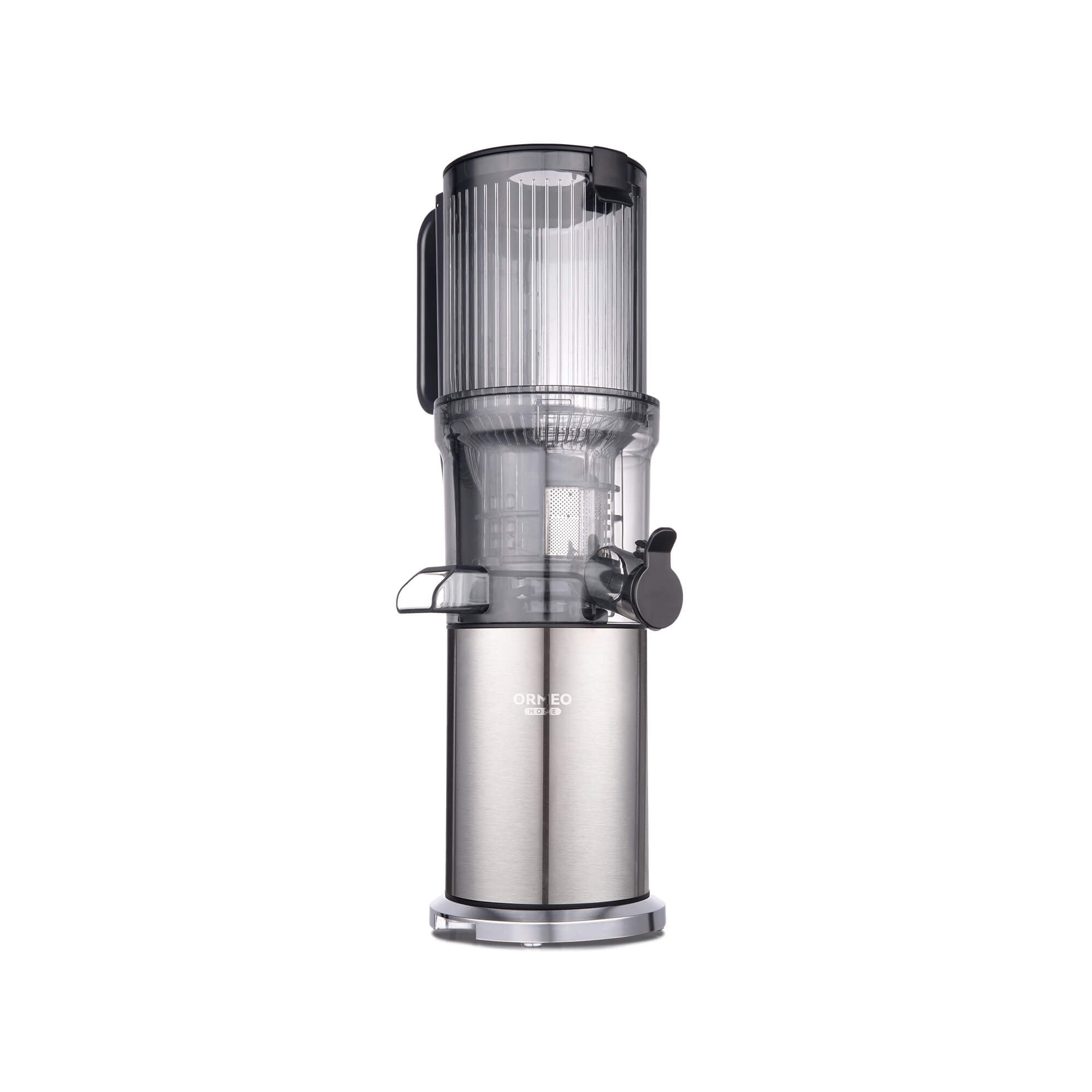
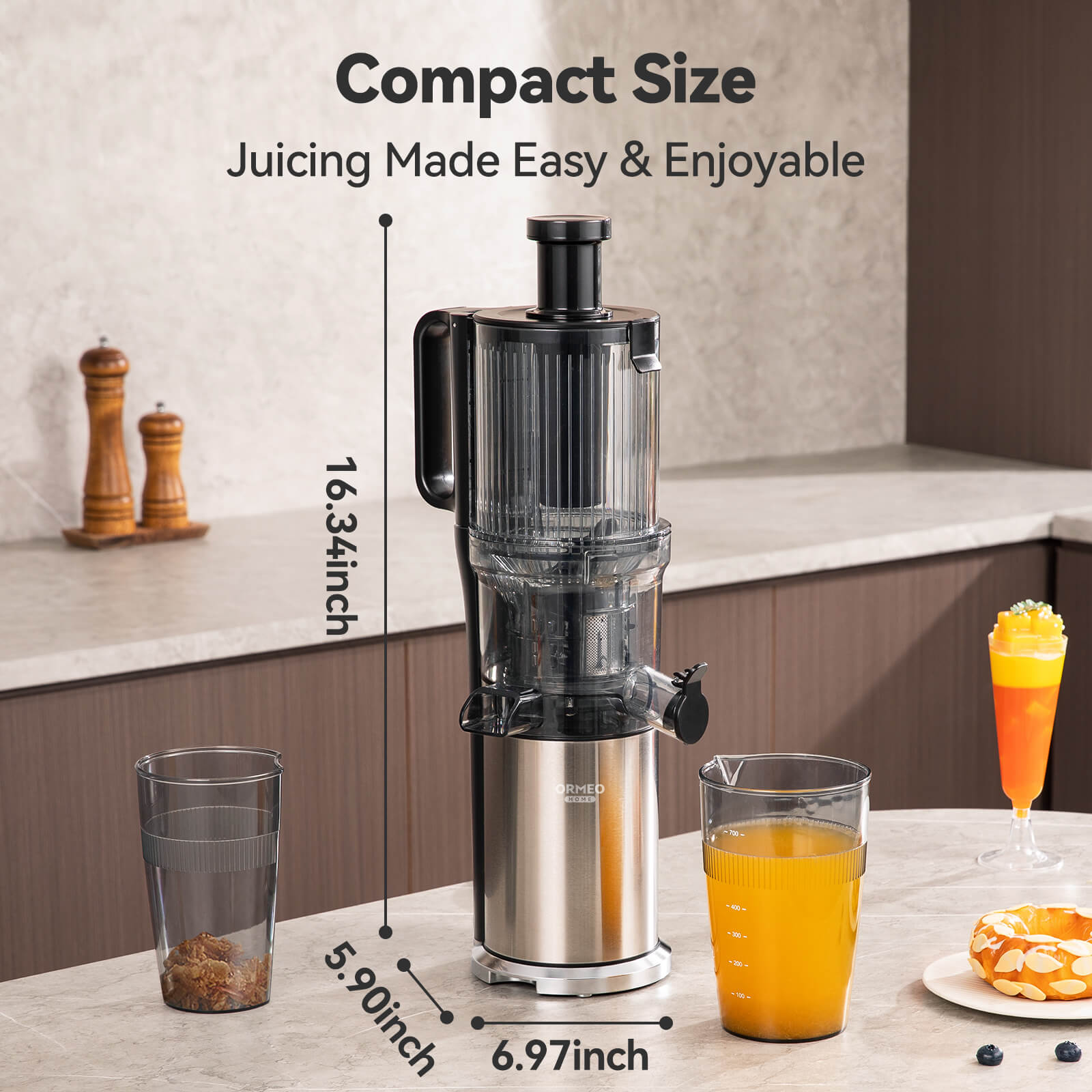
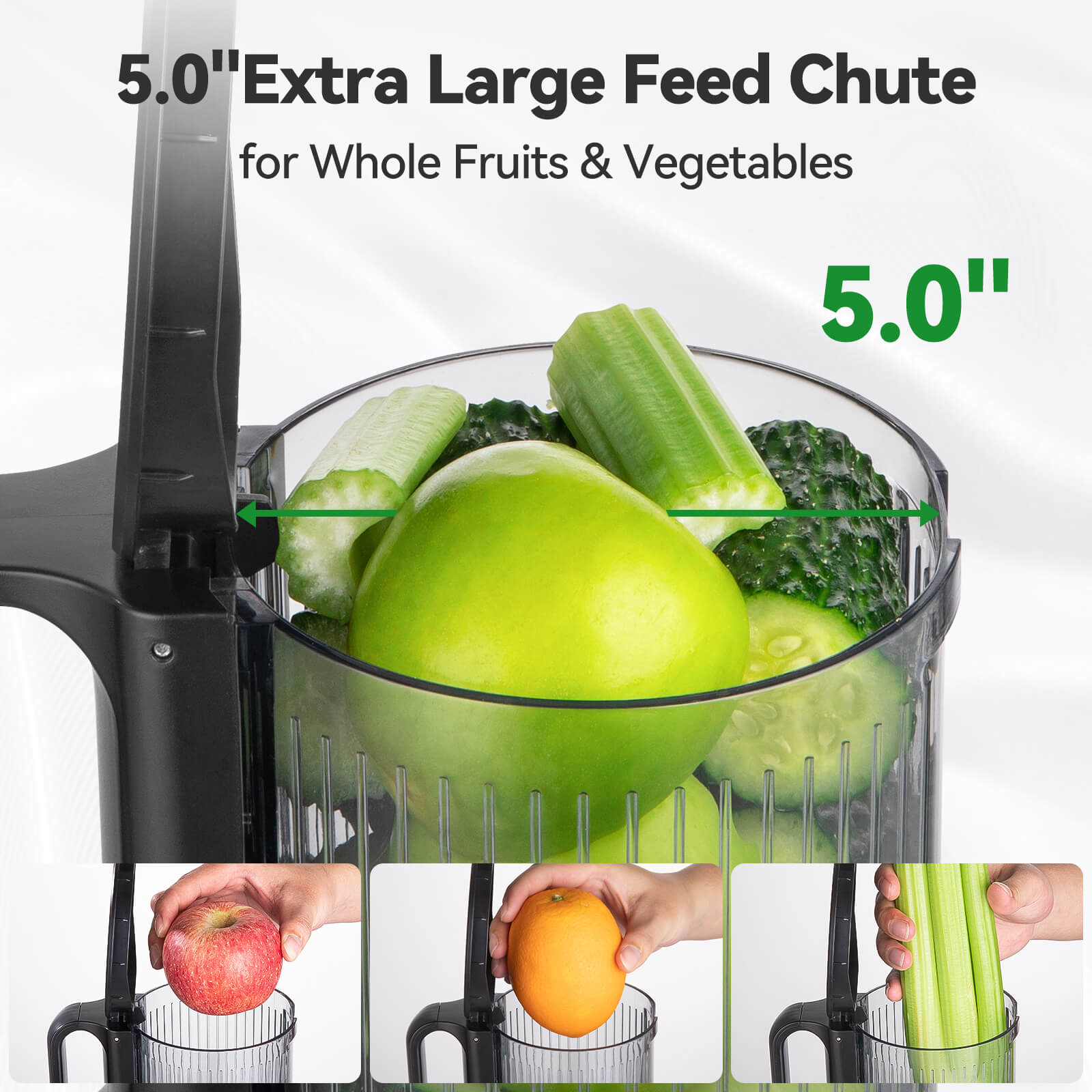
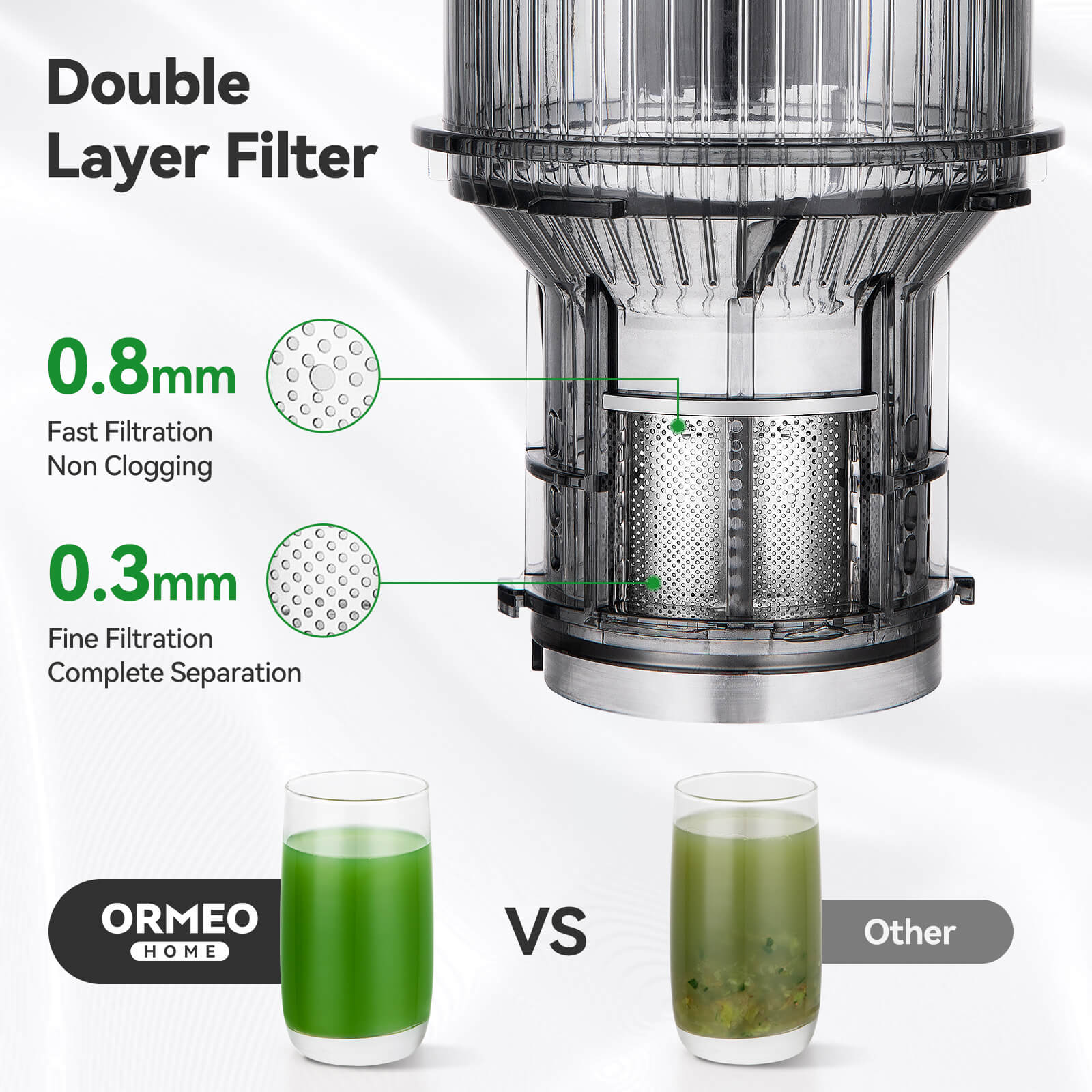
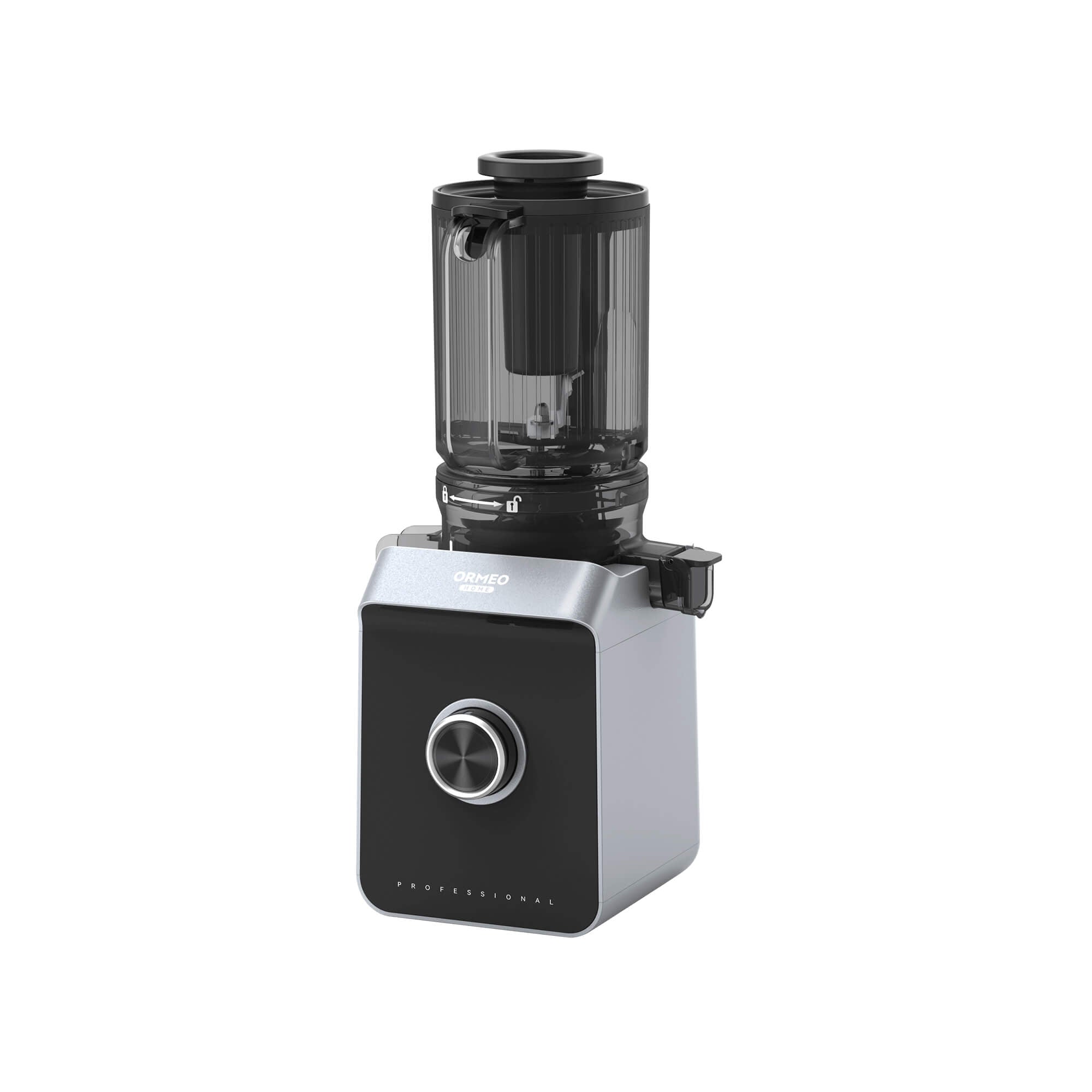
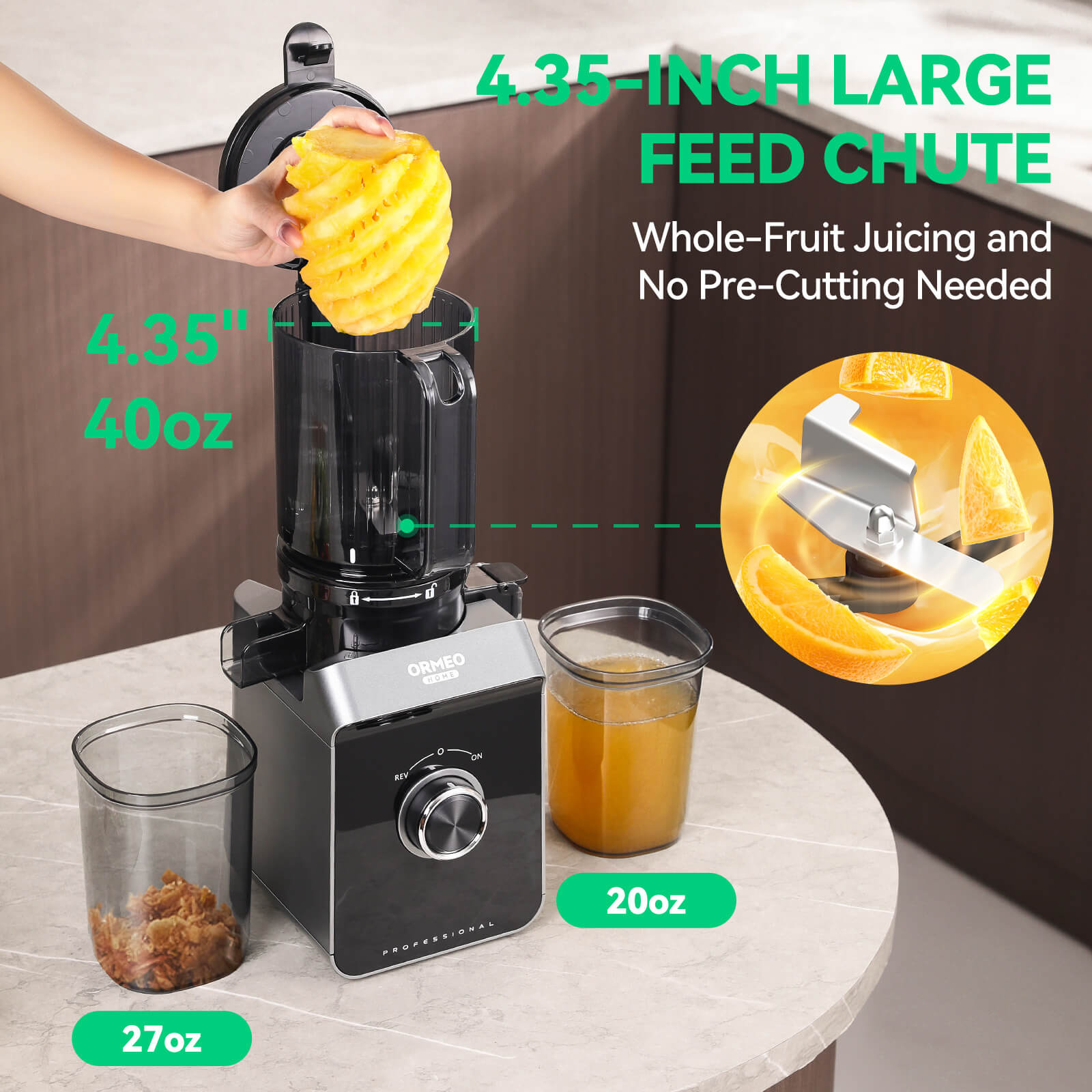

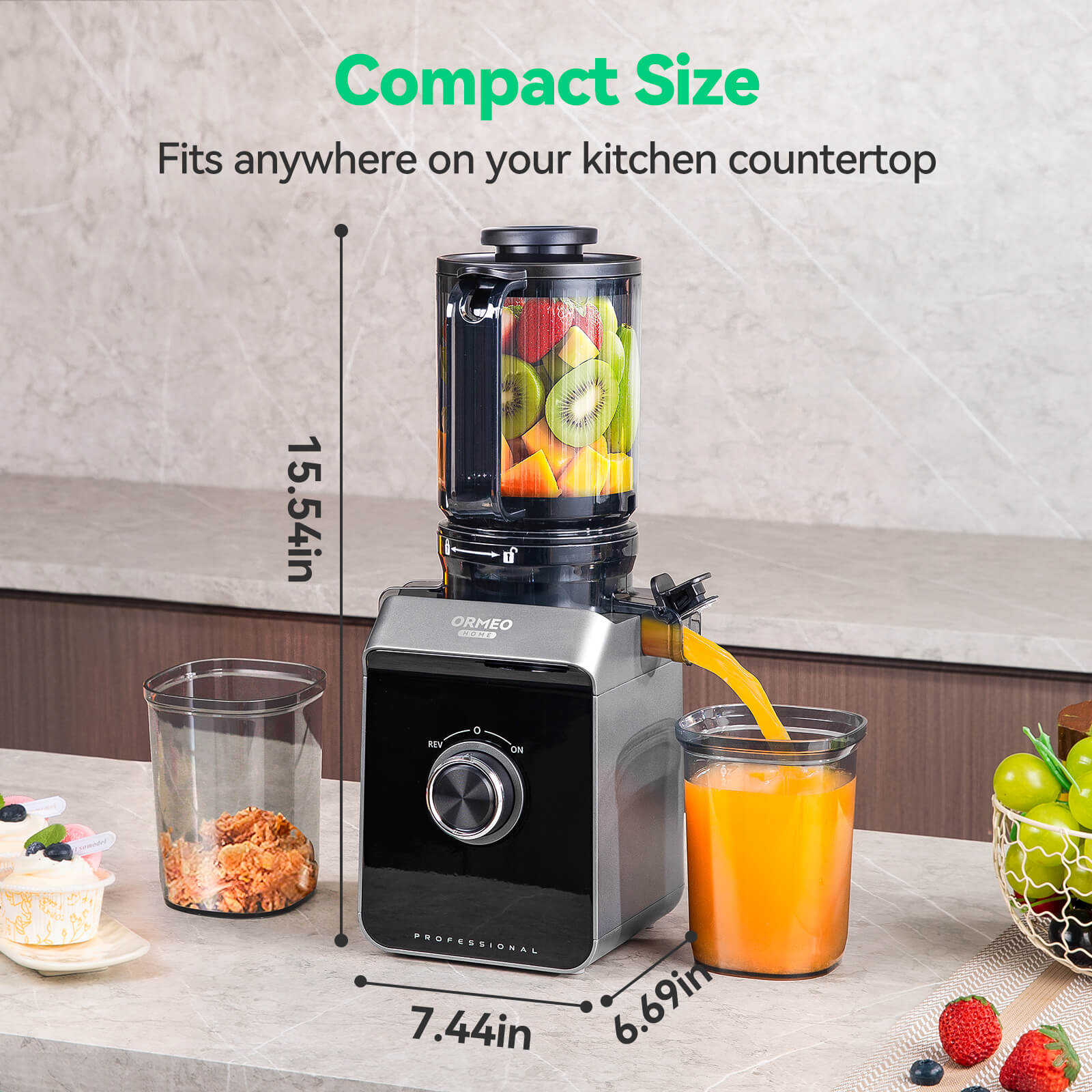
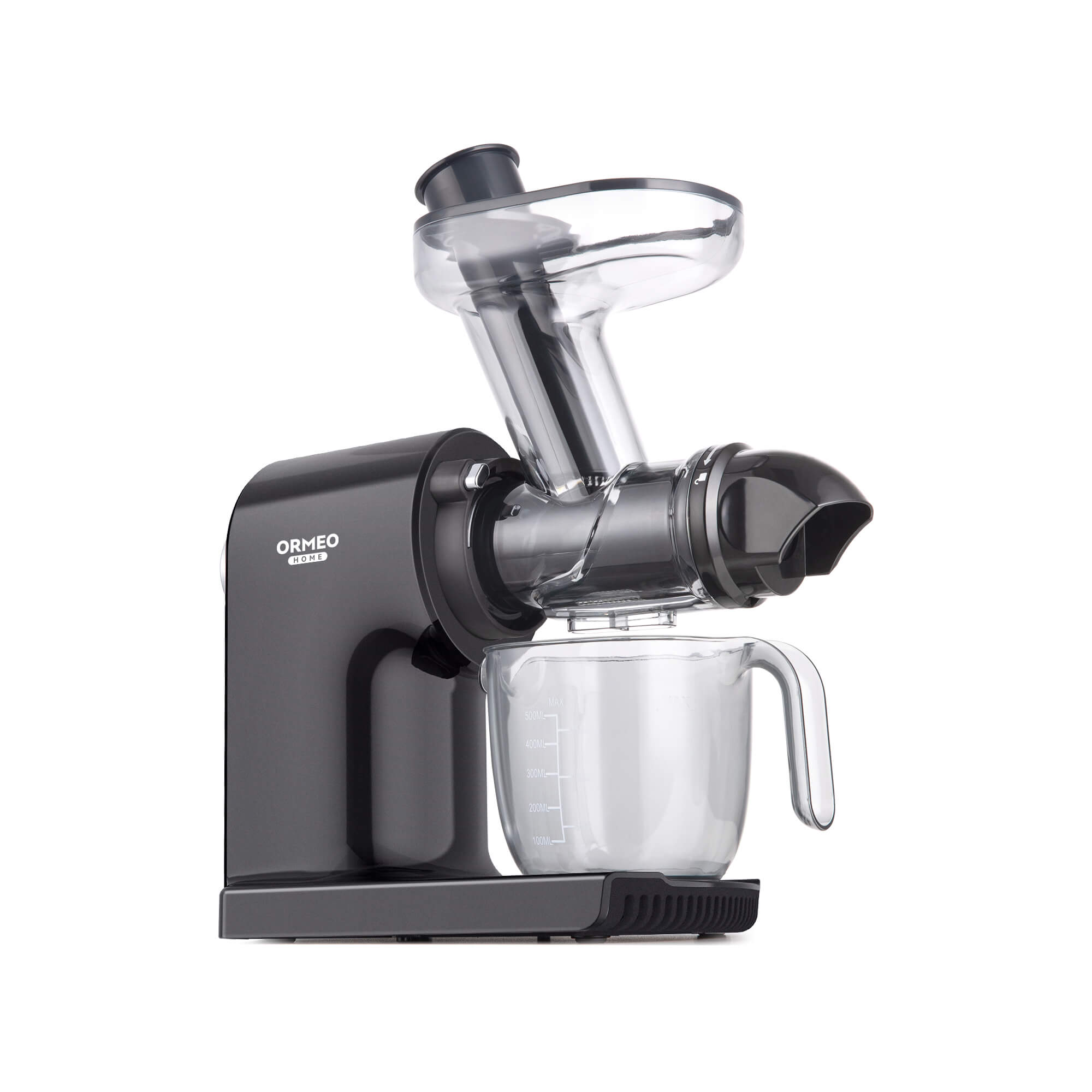
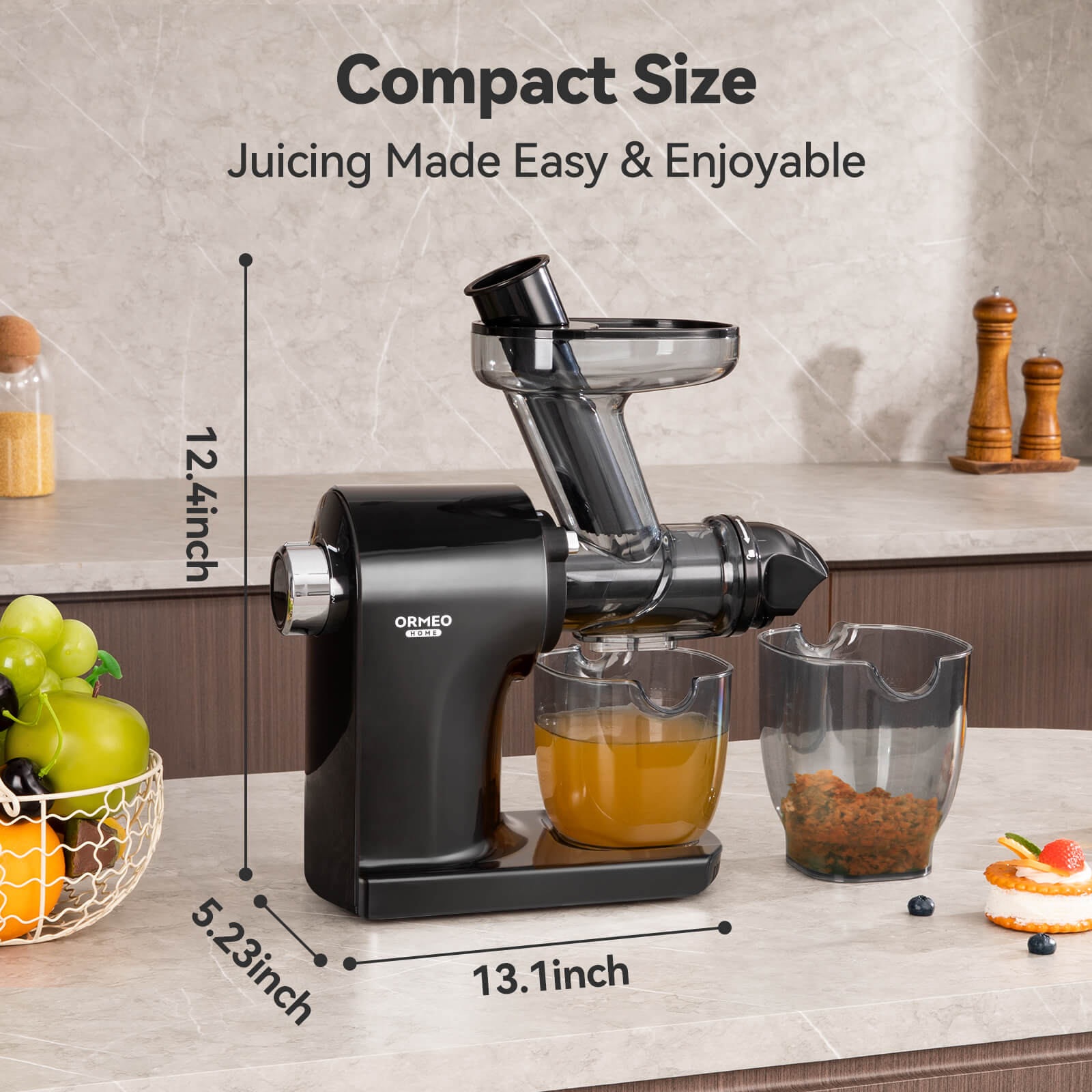
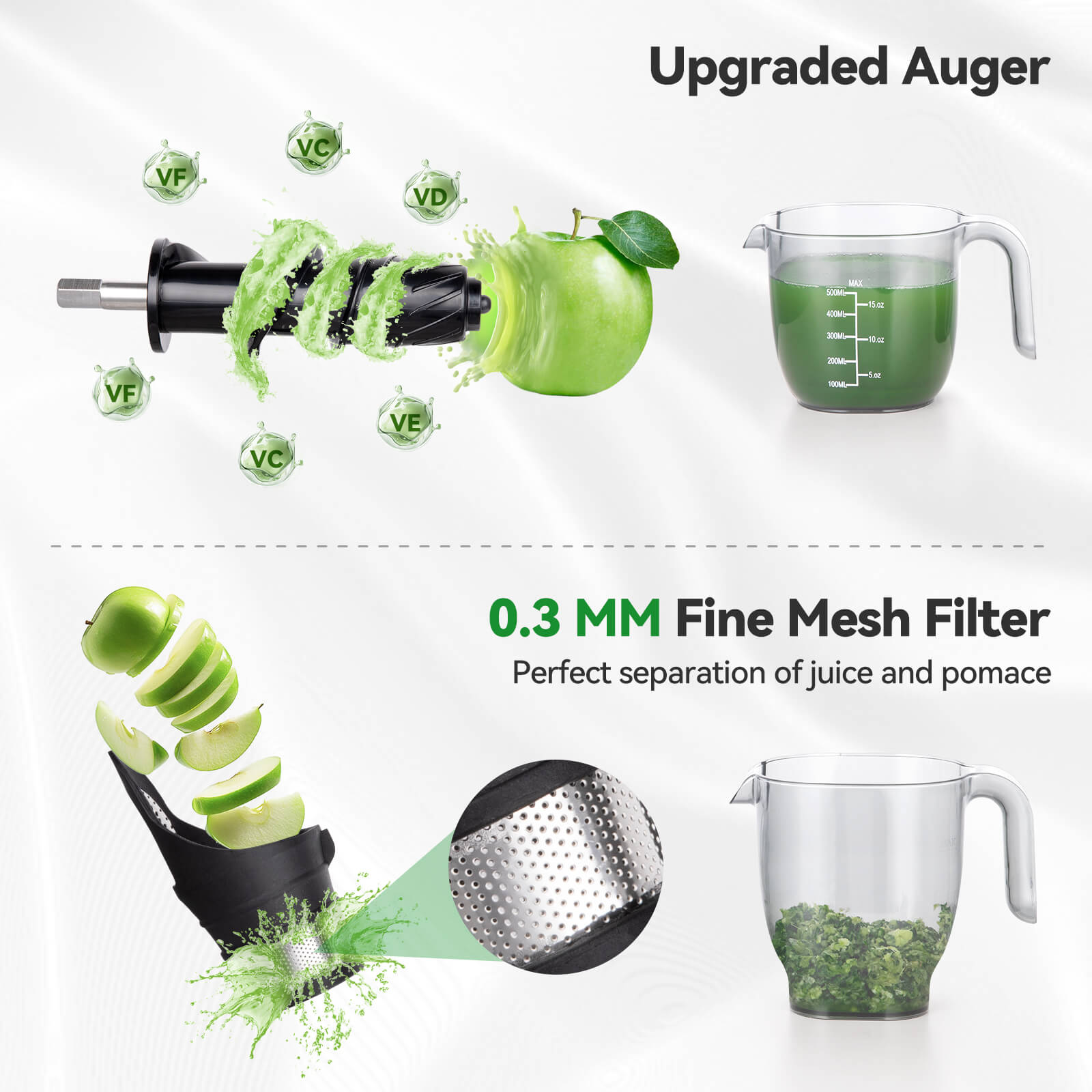
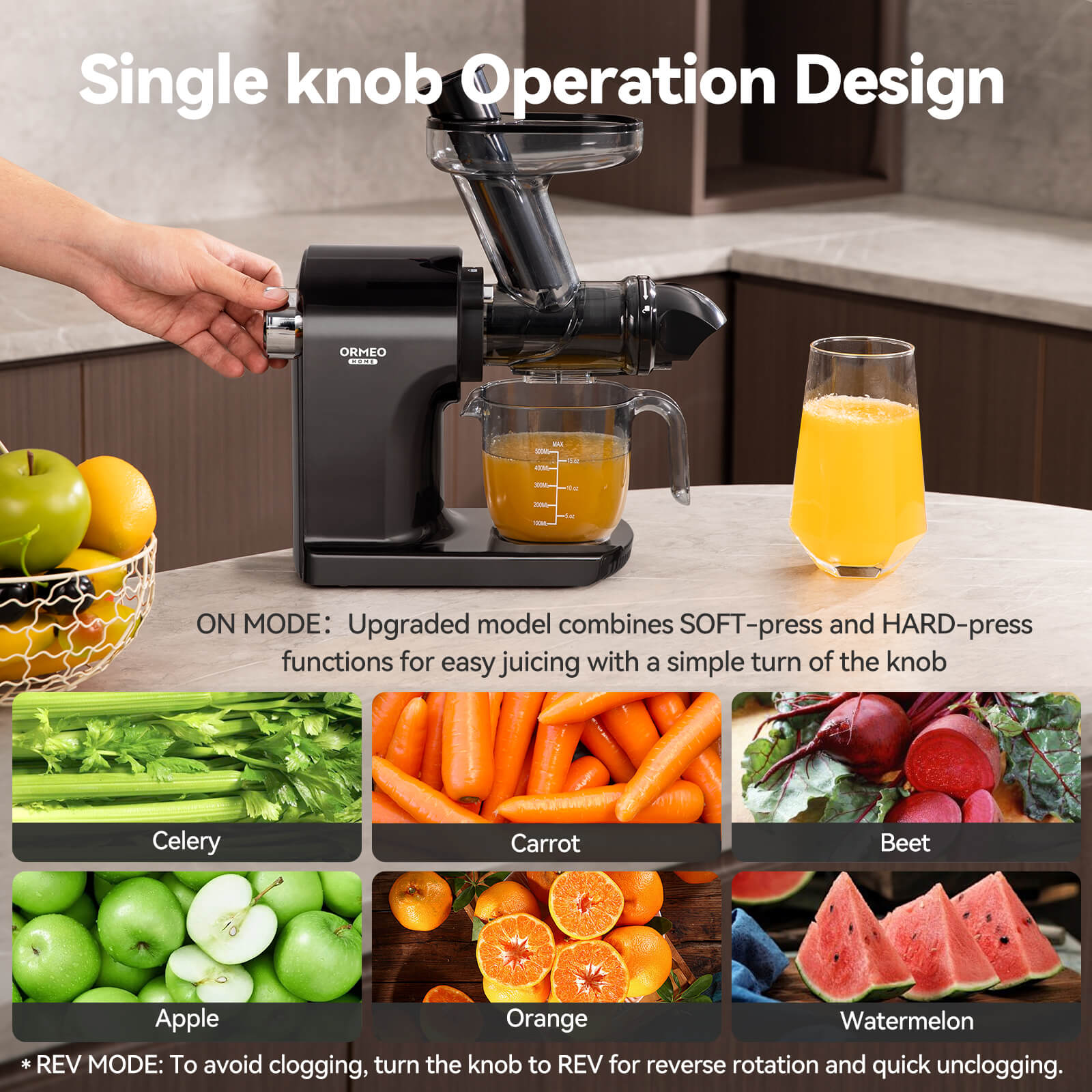
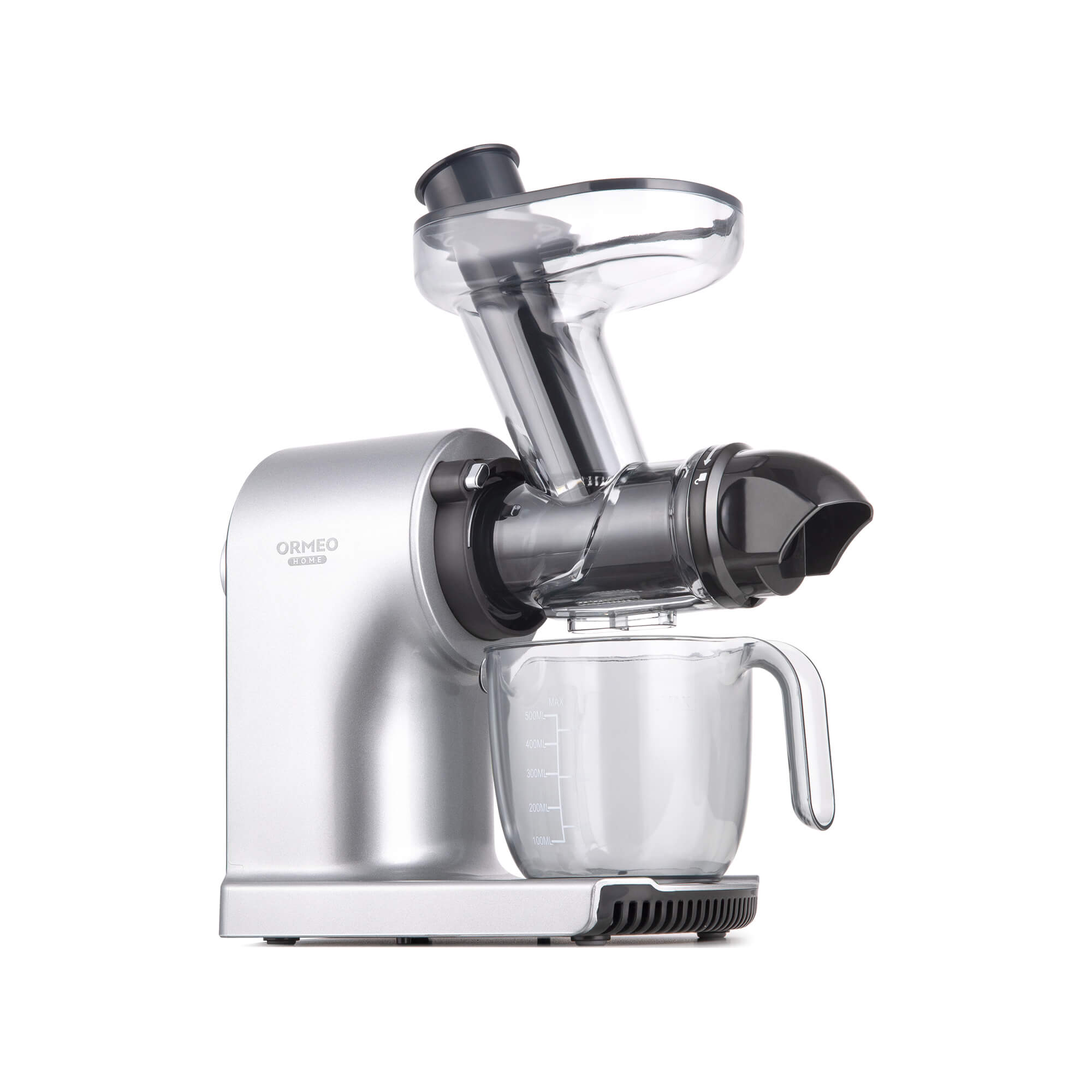
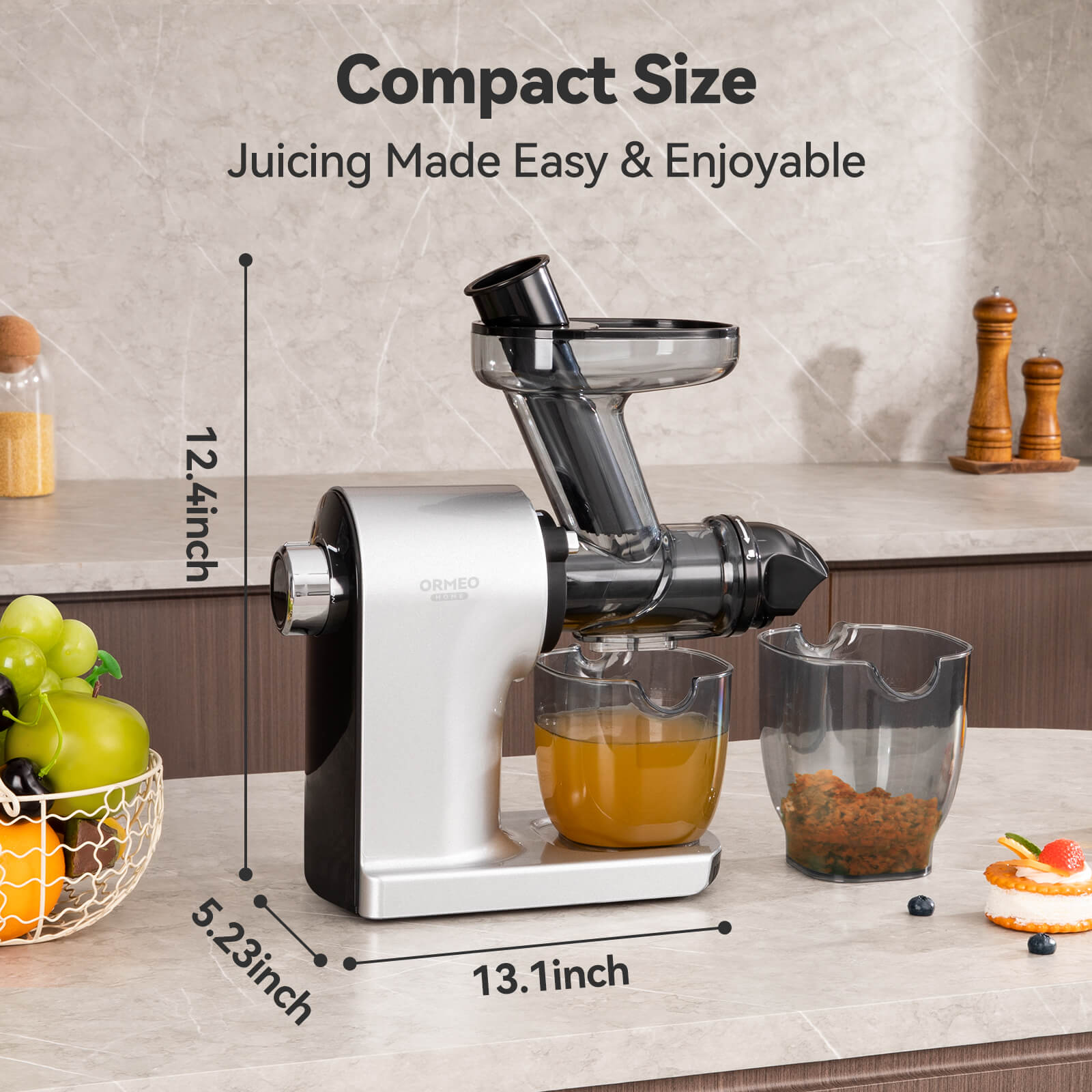
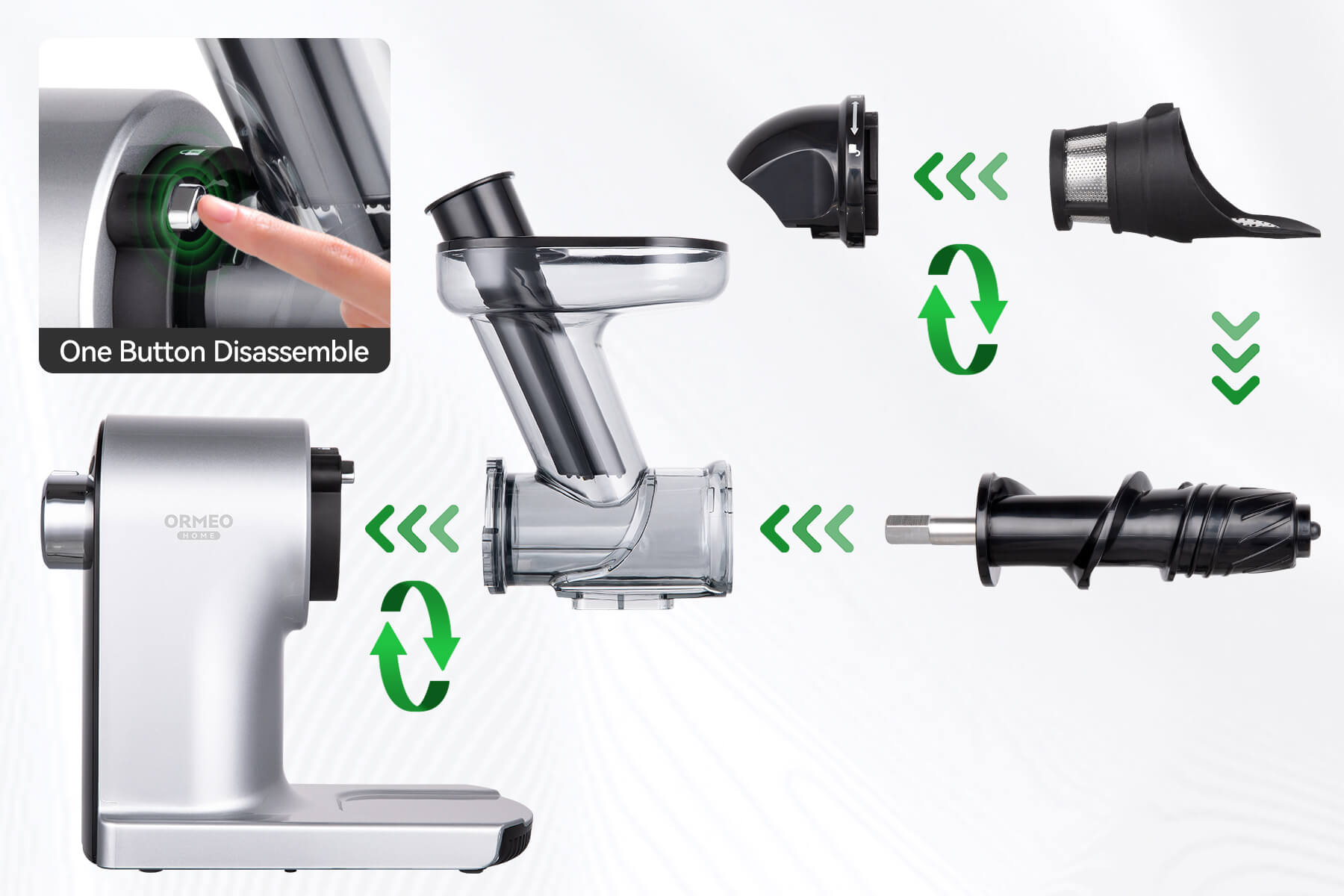
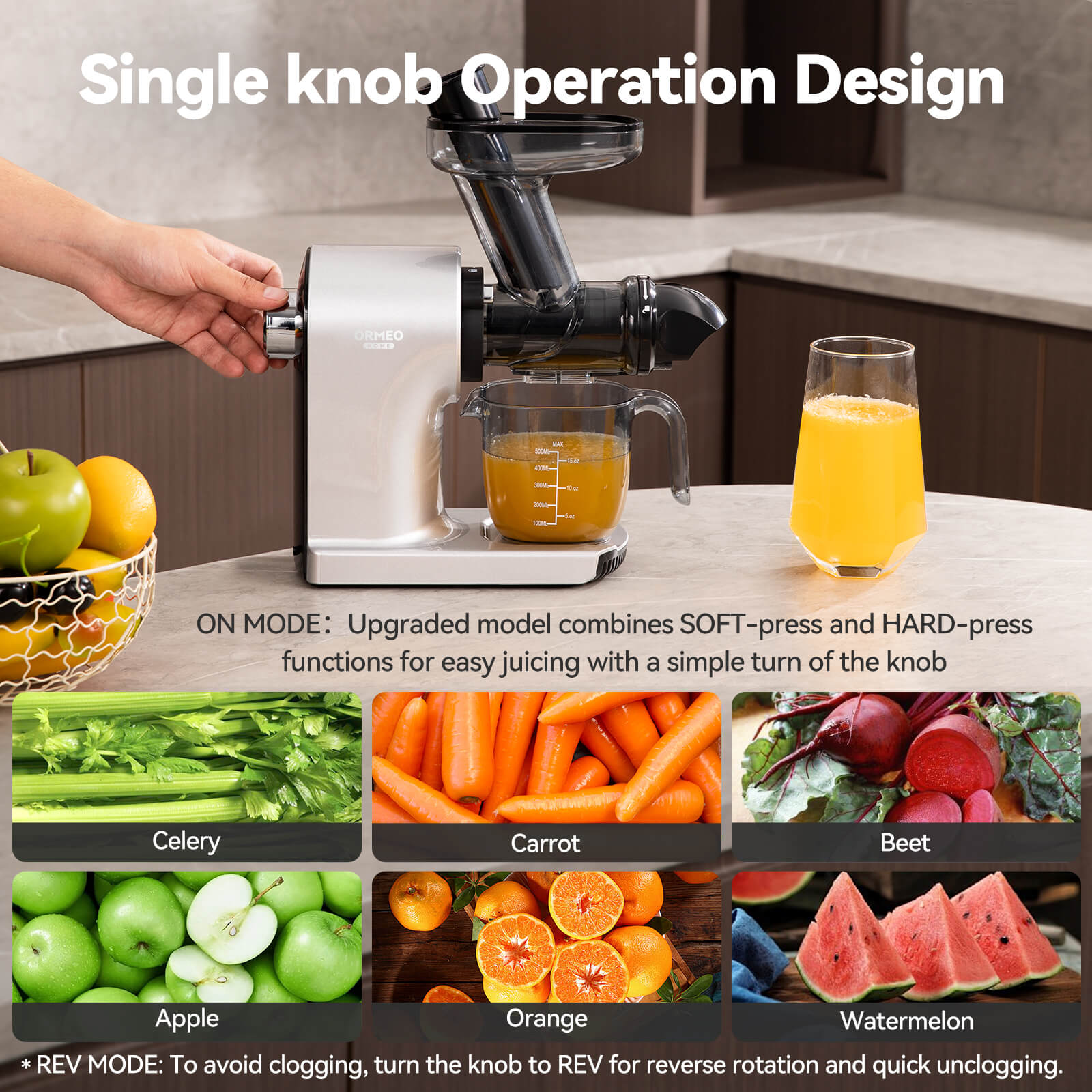
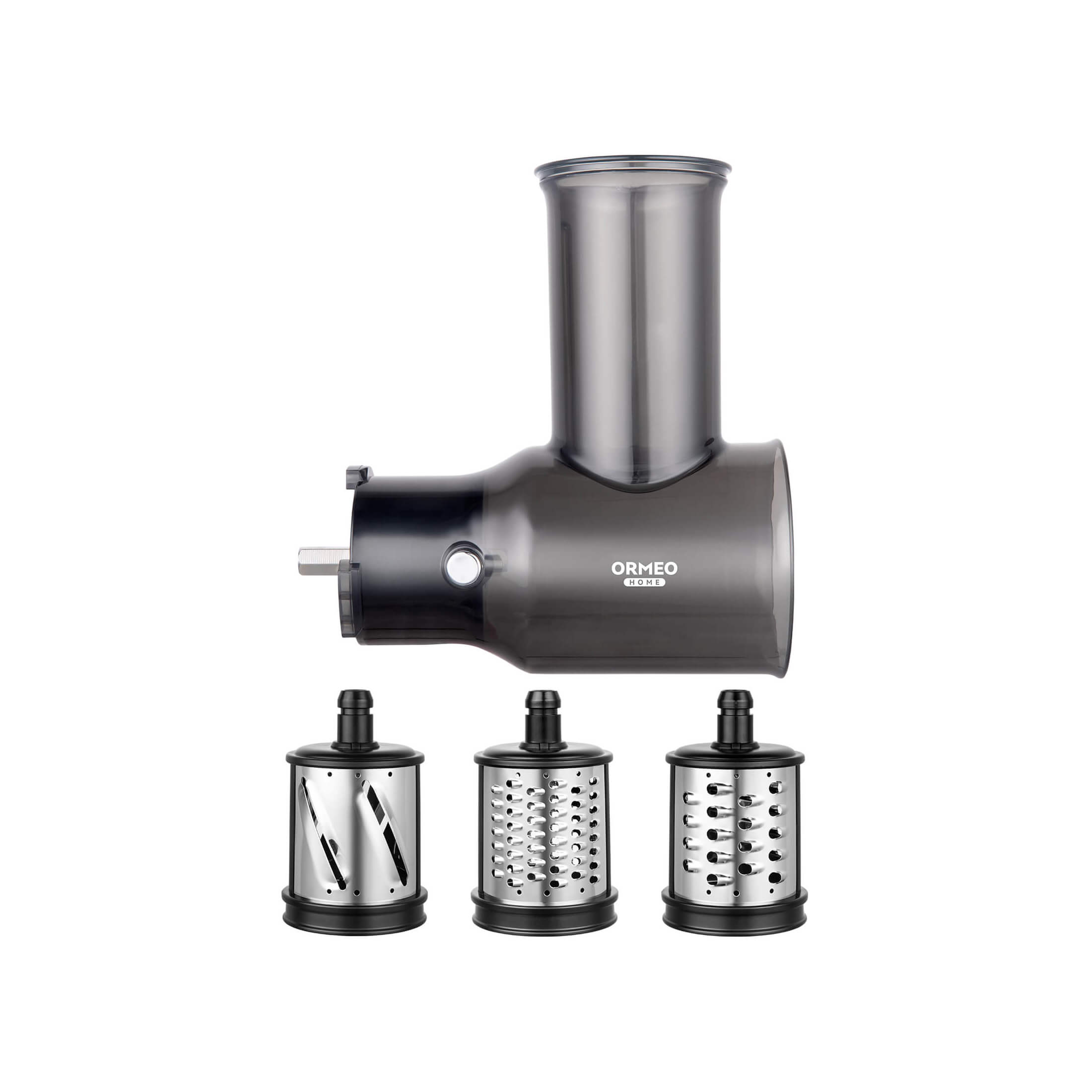

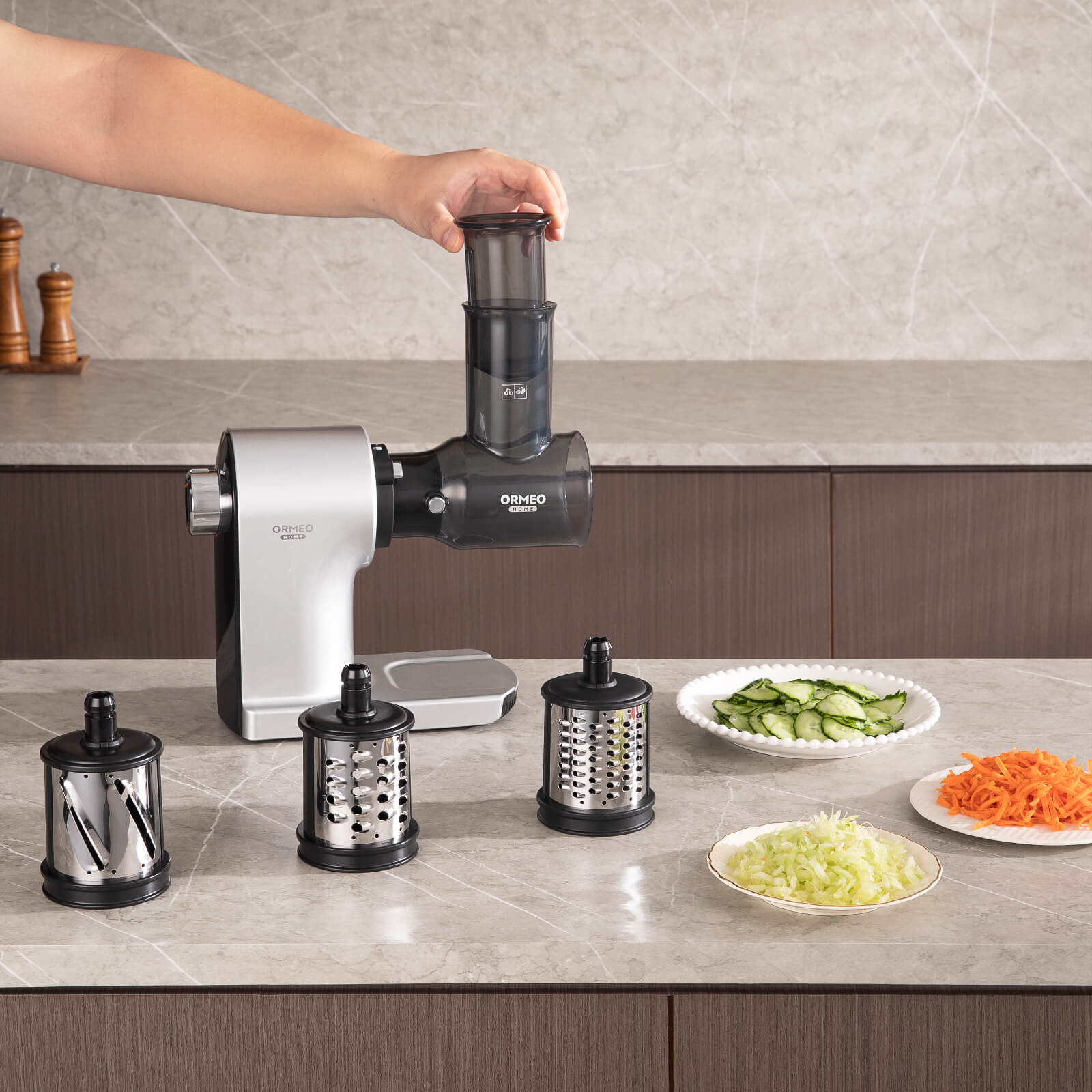
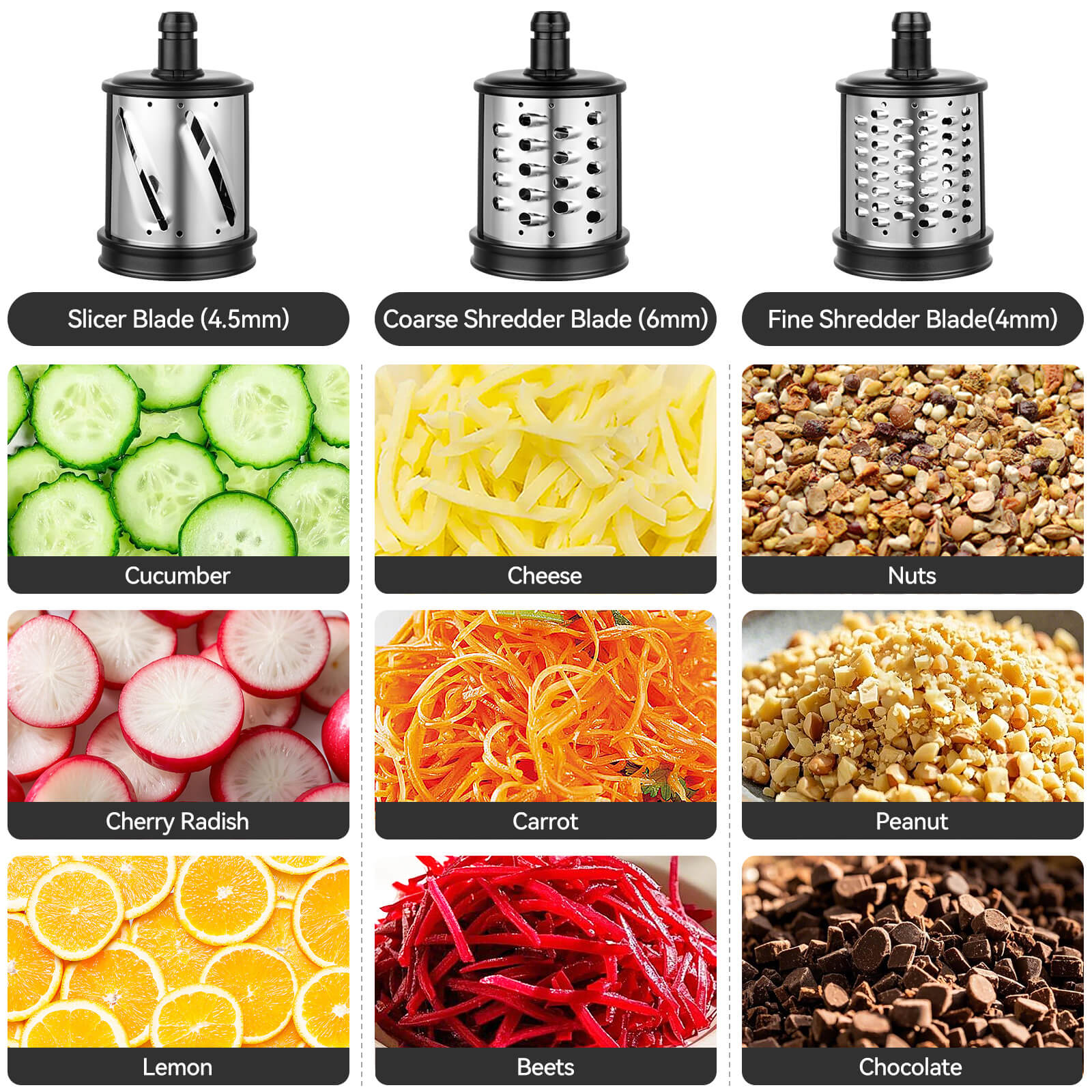
Share:
Why a Juicer Machine Boosts Your Health Daily
5 Best Juicers to Buy in 2025 for Fresh and Healthy Drinks